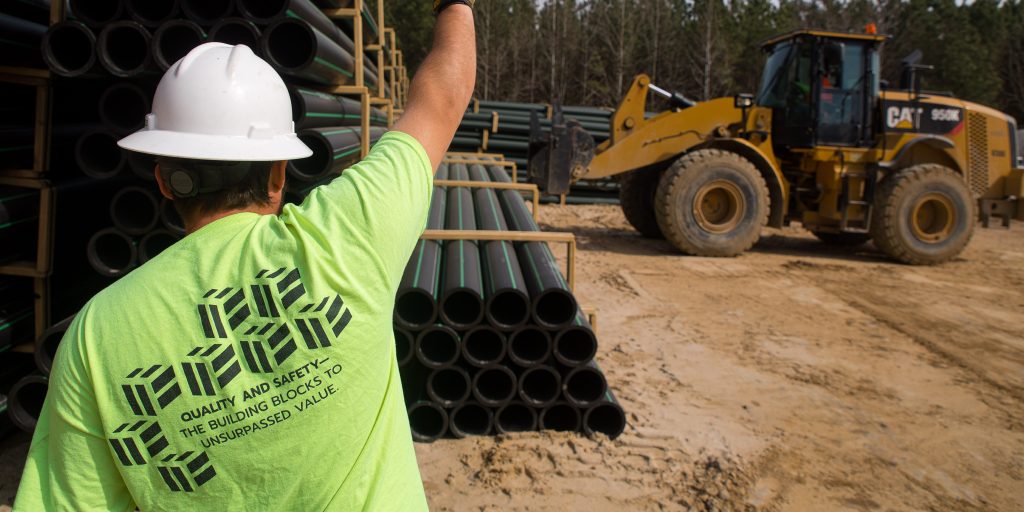The project consisted of the cleaning and demolition of 19 ea – 50,000 barrel above grade lead paint coated fuel storage tanks, foundations, containment berms and associated piping over approximately a 27 acre site. 4 ea – 100,000 barrel jet fuel storage (JP-5) tanks, 1 ea – 40,000 barrel fuel oil reclaimed (FOR) tank and 1 ea – 30,000 barrel fuel oil reclaimed (FOR) tank and associated piping was constructed. Each tank required a new elevated concrete foundation with tracer gas and leak detection piping, cathodic protection, anode rings and an interior containment liner. New automatic and mechanical tank gauging systems were installed. The new tanks and piping was painted per the contract requirements with full time onsite NACE inspection, testing and documentation. There were 10 ea fuel piping/ road crossing bridges with concrete approach slabs and associated asphalt paving constructed. New elevated vehicle entrance ways to allow access into and out of the tank containment areas were provided. All tanks, piping, road crossings and pump pads were pile supported. The pile work consisted of 228,452 driven feet of 12” precast concrete piles ranging from 95’ to 120’ long. New earthen tank containment berms with liners were installed around all seven new tanks. Two new fuel transfer pump stations and canopies were constructed. A new FOR/OWWO transfer pump station was also constructed. Extensive underground electrical distribution, potable water, fire water and storm drain systems were installed throughout the work site. This project was highly phased and required close coordination with the Activity to insure that their fueling operations were not interrupted. In addition, several existing fuel system valves and a transfer pump was removed from service and integrated into the new work for cost savings measures. This project received the NAVFAC Safety Award for the 1st Quarter of 2010.








 >
>
 >
>
 >
>







